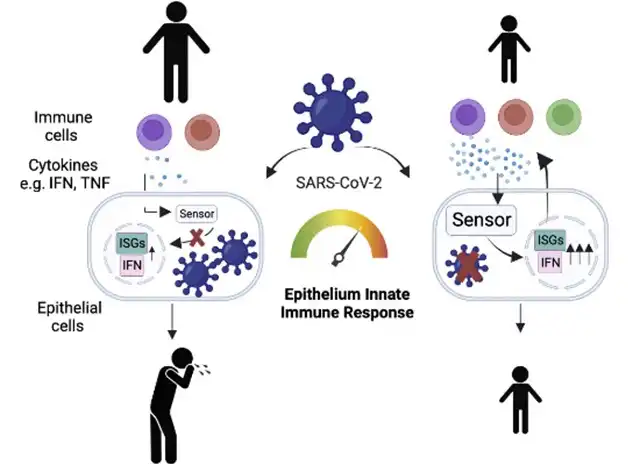Scientists Unveil Children’s Innate Weapon Against COVID-19
- Normal Liver Cells Found to Promote Cancer Metastasis to the Liver
- Nearly 80% Complete Remission: Breakthrough in ADC Anti-Tumor Treatment
- Vaccination Against Common Diseases May Prevent Dementia!
- New Alzheimer’s Disease (AD) Diagnosis and Staging Criteria
- Breakthrough in Alzheimer’s Disease: New Nasal Spray Halts Cognitive Decline by Targeting Toxic Protein
- Can the Tap Water at the Paris Olympics be Drunk Directly?
Scientists Unveil Children’s Innate Weapon Against COVID-19
- Should China be held legally responsible for the US’s $18 trillion COVID losses?
- CT Radiation Exposure Linked to Blood Cancer in Children and Adolescents
- FDA has mandated a top-level black box warning for all marketed CAR-T therapies
- Can people with high blood pressure eat peanuts?
- What is the difference between dopamine and dobutamine?
- How long can the patient live after heart stent surgery?
Scientists Unveil Children’s Innate Weapon Against COVID-19
Researchers at the German Cancer Research Center have unraveled the mystery behind children’s proactive defense against COVID-19.
In comparison to adults, the upper respiratory immune system of children reacts more actively to SARS-CoV-2 infection.
The reason for this difference lies in the fact that the nasal mucosa of healthy children is in a constant state of “high alert,” with higher immune cell density and increased secretion of pro-inflammatory cytokines.
This enhanced defense mechanism in children may serve as a natural protective response against respiratory infections.

Why do children and adolescents experience much milder SARS-CoV-2 courses than adults? Scientists at the German Cancer Research Center have found that, prior to infection, the immune system in the upper respiratory tract of children is more alert and active than in adults, allowing them to better resist the virus.
Numerous risk factors contribute to severe SARS-CoV-2 infections, including hypertension, diabetes, obesity, or pre-existing heart conditions. However, the most prominent and striking risk factor for severe courses is age.
During the COVID-19 pandemic, less than 0.001% of school-age children infected succumbed to the infection. As age increases, the mortality rate nearly exponentially rises, with the elderly experiencing a mortality rate exceeding 10%. Although the initial viral load shows no significant difference, children and adolescents exhibit fewer symptoms and a shorter course of illness compared to adults, especially the elderly.
Proactive Defense in Children’s Nasal Mucosa
As early as 2022, researchers from the Berlin Institute of Health (BIH) and the German Cancer Research Center (DKFZ) at Charité Hospital in Berlin took a significant step in understanding why children exhibit significant resistance to severe COVID-19 diseases. They found that the nasal mucosal epithelial cells of healthy children are in a state of “heightened readiness” for an extended period. At the molecular level, children’s nasal mucosa cells are much richer in sensing proteins through the RNA genome to recognize and initiate interferon responses to viruses than adults. Consequently, the virus can be quickly identified and combated upon entering the cells.
To further explore why children’s nasal mucosa better resists SARS-CoV-2, Marco Binder and his research team at DKFZ, in collaboration with colleagues from BIH, conducted a more detailed single-cell study on the cellular composition of healthy children’s nasal mucosa.
Key findings from DKFZ virologists: The number of immune cells in the nasal mucosa of children is significantly higher than in adults. Even in healthy, uninfected children, individual immune cells produce more pro-inflammatory cytokines. The immune system communicates with mucosal cells through these messengers, stimulating them to produce sensing proteins.
“The study demonstrates that the presence of these cytokines at low levels keeps airway epithelial cells in a state of high alert. Subsequently, mucosal cells arm themselves by increasing the production of viral sensing proteins, enabling them to respond more rapidly to SARS-CoV-2 infection.”
Children’s Protective Mechanisms
Therefore, children seem to have a naturally robust protective mechanism against respiratory infections, which likely extends to other viruses. Marco Binder explains, “However, during a pandemic, this difference becomes particularly pronounced because everyone’s immune system is encountering this coronavirus for the first time. In contrast to other infections like the common cold or flu, adults have developed immune memory through repeated exposure to the virus, aiding in pathogen resistance. Hence, the pronounced effect of children’s stronger viral defense may not be as evident.”
Binder also highlighted another unique aspect, stating, “SARS-CoV-2 replicates rapidly in our cells, and it has many tricks to shut down the sensors of the cellular virus alarm system. Therefore, infant protective mechanisms are especially crucial against this pathogen. For other respiratory infections, the difference between children and adults may not be as significant.” The scientist plans to further investigate this issue in future research projects.
Marco Binder believes it might be worth exploring preventive strategies against SARS-CoV-2 and other respiratory infections. “This approach could mimic the cellular composition of children’s mucosal tissues, for example, by inhaling low doses of cytokine preparations.”
Scientists Unveil Children’s Innate Weapon Against COVID-19
(source:internet, reference only)
Disclaimer of medicaltrend.org
Important Note: The information provided is for informational purposes only and should not be considered as medical advice.



